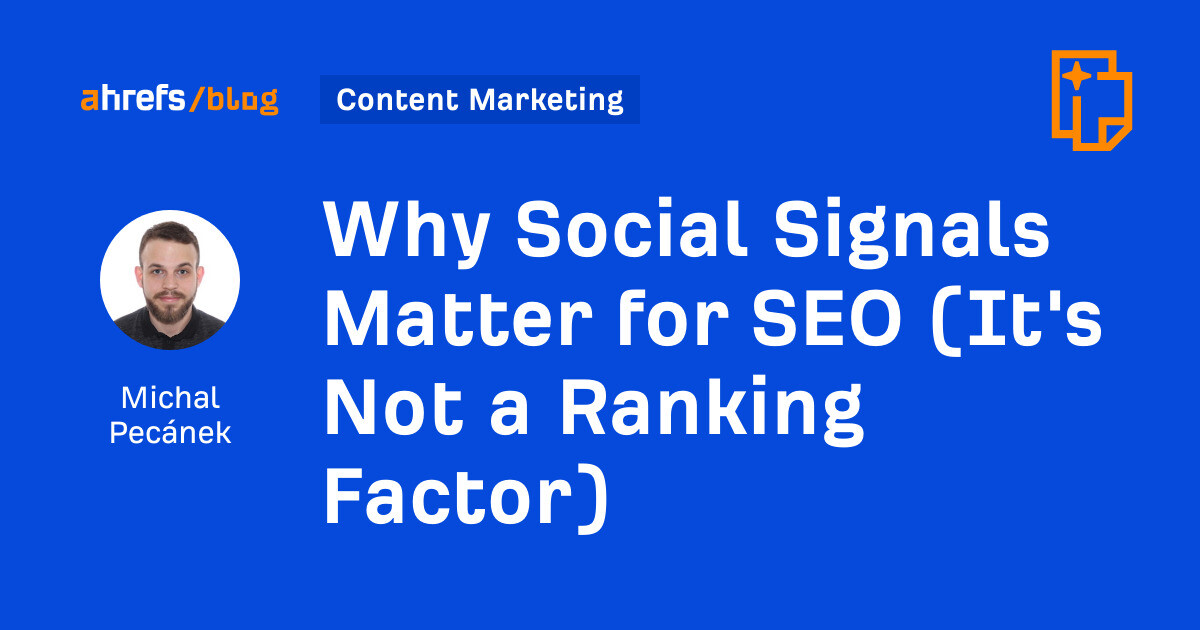Social signals are all the engagement metrics (e.g., the number of likes, shares, or comments) your content gets on social media. They generally reflect how visible and engaging your content on social media is, making them a good indicator of your content distribution success.
If you’ve been in SEO for a while or you’ve already done some research, you’ve probably come across claims that social signals are an SEO ranking factor. That’s not true, at least according to multiple statements from Google’s spokespeople.
But even though Google doesn’t take social signals into account in its ranking algorithms, it still makes sense to keep improving them. In fact, many businesses can significantly improve their SEO by putting more effort into their social media content distribution.
Want to make more sense of it and learn how you can improve your social signals to help your SEO? Keep on reading.
We should first discuss the reasons why social signals aren’t a ranking factor. Of course, the most straightforward ones are claims like this one from John Mueller, Google’s search advocate:
Even though it’s quite an old video already, it’s the most straight-to-the-point statement regarding social signals and SEO I could find from Google’s spokespeople. There have been many other claims implying the same since then.
Now, here’s my take on why social signals don’t make sense as a ranking factor.
First of all, social media is full of spam and fake accounts. You can buy unlimited followers, likes, etc., for pennies. How should Google identify social signals from real accounts when social media platforms themselves struggle with filtering and banning all this spam?
Then there’s the role of social media algorithms. A lot of great content gets buried with no to low visibility, while a lot of bad content gets traction. If you manage a huge account or amplify your social media posts, you get an advantage that has nothing to do with the content itself.
That said, the posts that tend to get popular on social media aren’t usually really made to rank in search, and vice versa. Can you imagine “boring, but necessary” articles like this getting tons of likes, shares, and comments?

Me neither. I can’t think of sharing this in a way that will stop many people from scrolling their feeds and engaging with the post. If I feel like that as the author, others must be even more disincentivized from sharing that.
But it targets keywords with solid search demand and ranks for them. It delivers what people looking that up want to learn about.
On the other hand, one of my most popular tweets was things many people don’t know about bounce rate; I also linked to the article at the end of the thread:
The first tweet from the thread above got some great social signals, but even the last one containing the link to the post itself wasn’t too bad:

But the article never ranked well in Google:

Keep in mind that even if I found many other examples like this, it wouldn’t prove any causality because we’re looking at just one variable. There are hundreds, if not thousands, of variables involved in both search engine and social media ranking algorithms.
The point is there isn’t a big overlap in factors that make content popular on social media and in search engines, so it won’t even make sense to consider aligning their rankings.
Content distribution is the Achilles’ heel of many marketing teams. They spend a lot of time on creating great content, but there’s often not much they do after publishing it.
Social media (both organic and paid) is an important channel to use in your content distribution mix. Here’s why improving your social signals can improve your SEO too.
Social media is a part of your SEO and content marketing flywheels
Rand Fishkin popularized the term “marketing flywheel” as a set of continuous and repeatable marketing efforts that reinforce each other, making more impact with less effort after each iteration.
Here’s Rand’s SEO and content flywheel diagram to make things crystal clear:

This can also be perceived as a snowball effect in the context of marketing tactics.
You can see that content distribution occupies the whole left side of the diagram. Social media is a crucial part of that, and strong social signals reflect the success on this front.
Simply, if you take out the focus on social media from the flywheel, you’ll experience much more friction.
An indicator of becoming an authority in your niche
One of the parts of the flywheel model is this: “Grow your authority to rank better in search engines.”
While this is a simplified view and being an authority can be just one of many variables involved to rank well, it’s certainly an aspect that’s been growing in importance in recent years.
Authoritativeness represents one of the acronyms in Google’s concept of E-E-A-T that’s used to evaluate and tweak Google’s search ranking systems. The other letters stand for expertise, experience, and trustworthiness.
Google’s Search Quality Evaluator Guidelines mention social media multiple times. It makes sense that it’s something Google needs to pay attention to in terms of assessing people’s and brands’ E-E-A-T.
Here’s a good take on this from one of the most respected experts in this field, Marie Haynes:
Now think about the accounts you follow on social media to learn about things. They likely signal many, if not all, the E-E-A-T components. That’s what you should aim to achieve with your brand on social media (and elsewhere) too.
You’d get the advantage of compounding your social signals and being often referred to as a go-to resource. We can shamelessly claim to be such an authority in the SEO industry. That effect translates into automatically getting links to all of our new pieces of content, for example:

This particular example got most of the initial traffic thanks to the author, Patrick Stox, sharing that on his Twitter:
Patrick himself is one of the biggest SEO authorities, and the fact that he shared a hot take that sparked discussions certainly helped too. But we’re seeing similar effects on initial backlink acquisition across the board.
Of course, sometimes the links are mostly worthless, as most of them come from content aggregators and spam websites. But we can often see it being showcased in industry news, as shown above with one of our recent pieces.
Strong correlation with Discover traffic
Google Discover is an automatically generated and highly personalized mobile feed based on your online activity. It shows information and news about the topics that interest you, like SEO, photography, or traveling.

I know many people who don’t know this feed exists on their mobile devices, but I also know businesses that drive the majority of their organic traffic through this feed (like news and content-heavy websites).
Even a B2B SaaS blog like ours can get a solid chunk of traffic from it:

Discover is largely a black box that’s difficult to optimize for. But one of the variables with a strong correlation to Discover performance is the buzz generated with your content distribution.
Google seems to push pieces of content that get popular on social media to the top of its Discover feed too. Strong social signals can very well translate into nice Discover performance.
It should now be clear that you need a strong SEO and social media game if you want the best performance from your content marketing.
This chart shows how you ideally begin driving traffic with your content distribution efforts that later translate into more passive, organic traffic:
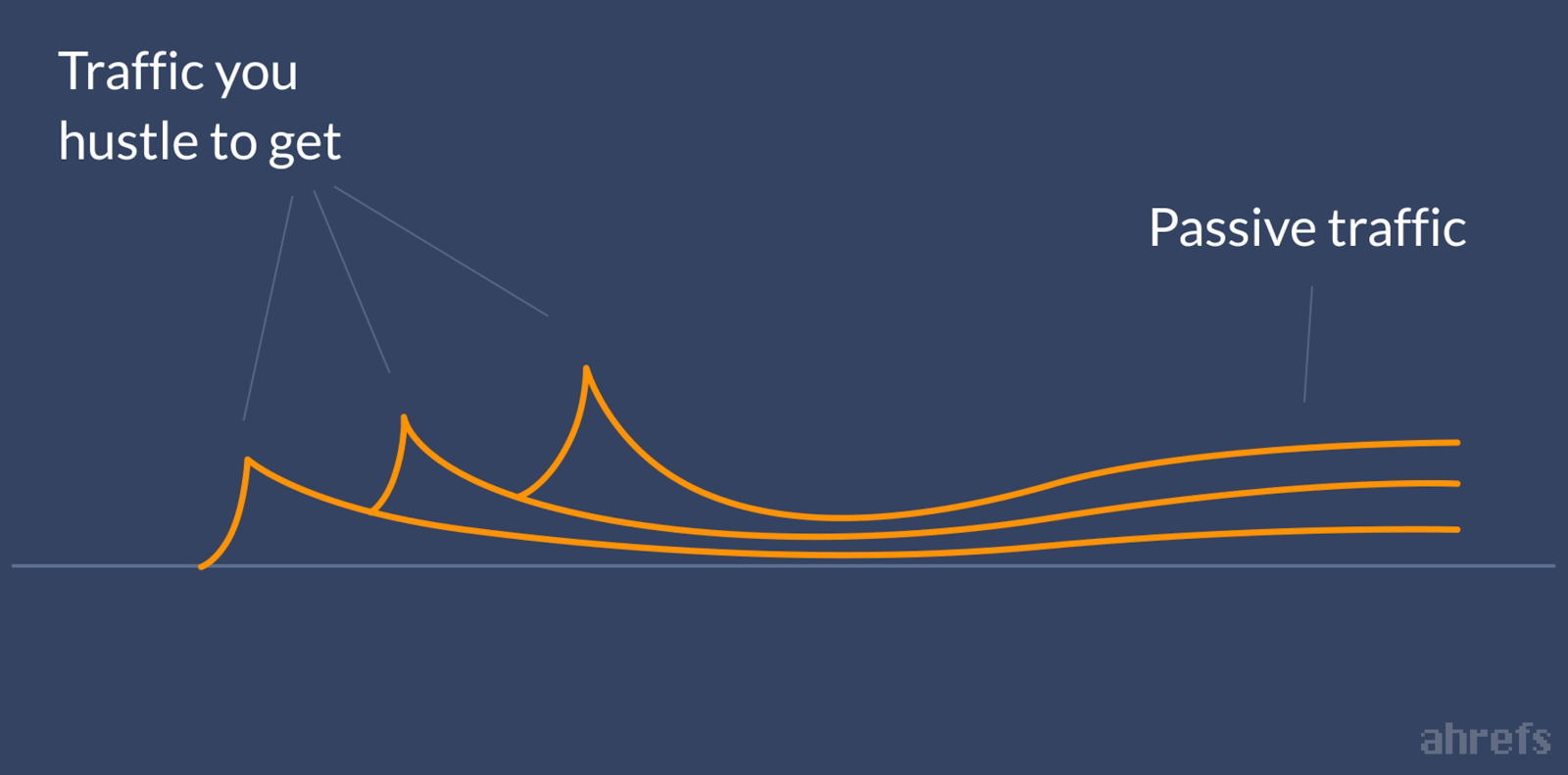
We’ve got a whole guide on content distribution, and there are countless good resources on learning social media marketing. For this reason, we’ll only go through the most relevant tips that matter in integrating your social media and SEO efforts.
1. Interlink and reconcile your website with social media profiles
We’ve already got the premise that building your brand and authority on social media could also benefit your SEO. Google is able to reconcile author and brand signals from multiple sources, including social media.
To make the work easier for Google, there are two basic things you should do.
The first one is interlinking your website with your social media profiles. Your website likely already contains links to your social profiles, and your social profiles likely link to your website. But there’s a way to reinforce this connection in the eyes of Google—sameAs schema markup.
Schema markup is a code that helps search engines to understand your content and better represent it in the search results. There are countless ways to mark up your content. But one of the basic markups to get right is on a page that describes your company, usually your homepage or About page.
Here’s an excerpt of what it looks like on Ahrefs’ About page:
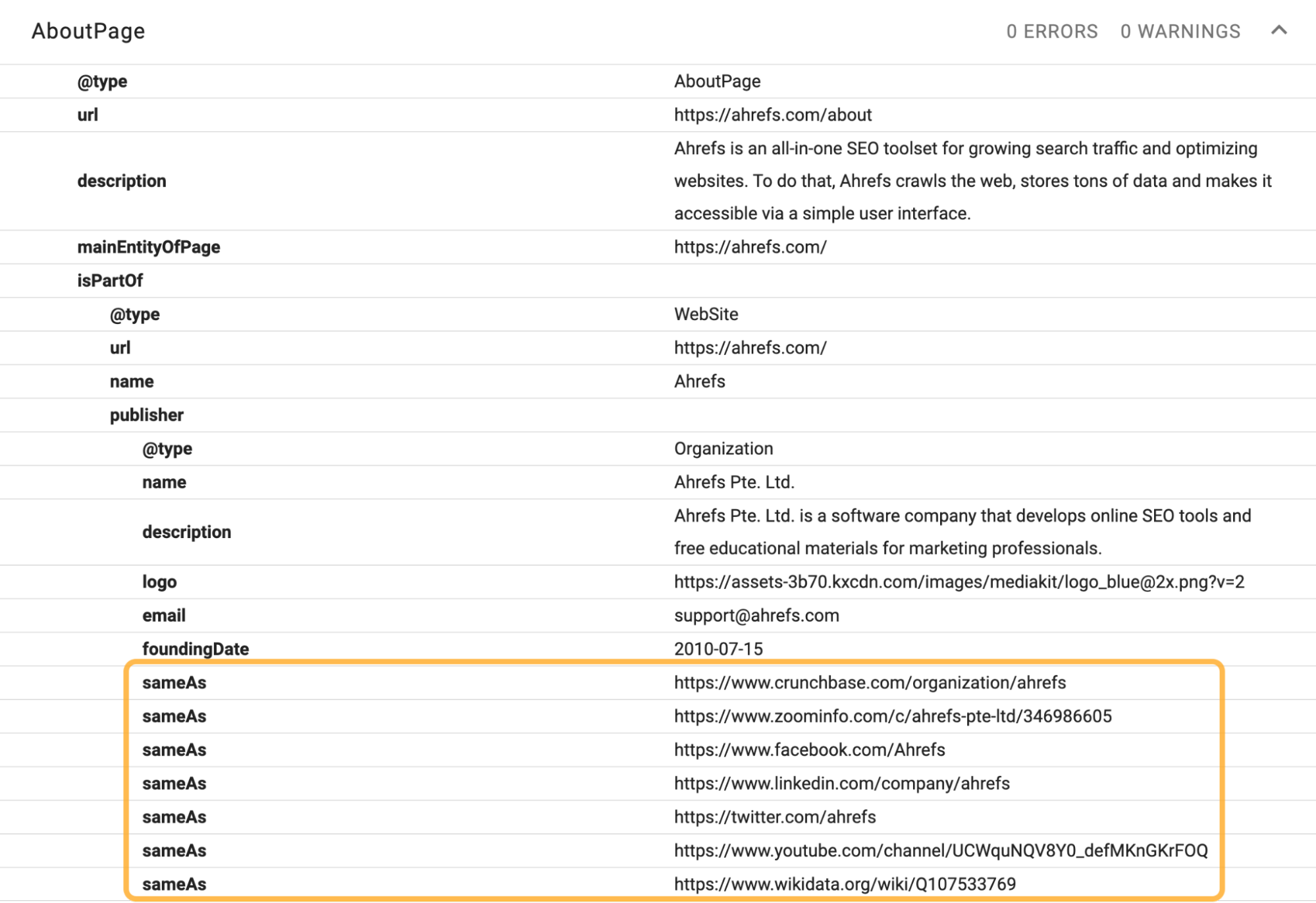
The highlighted part is the sameAs property that points to other important Ahrefs company pages, including social media profiles.
This is one of the most basic schema properties. The great news is that any solid, modern CMS makes it easy to add this to your pages. But schema, in general, is a more complex topic, so I suggest you check out my schema guide for beginners before you start marking up your pages.
The second important aspect is to reconcile your company and product information on these important pages. The way you describe your company and products on your website should match the descriptions elsewhere too. This is important for building your entity in Google’s Knowledge Graph, a topic that’s very relevant but also too complex to delve into here.
In reality, it’s nothing more than mostly copy-pasting your About page to fit your other company pages, like Ahrefs’ LinkedIn page:

Lastly, this can lead to another SEO benefit: owning more search results on branded SERPs:
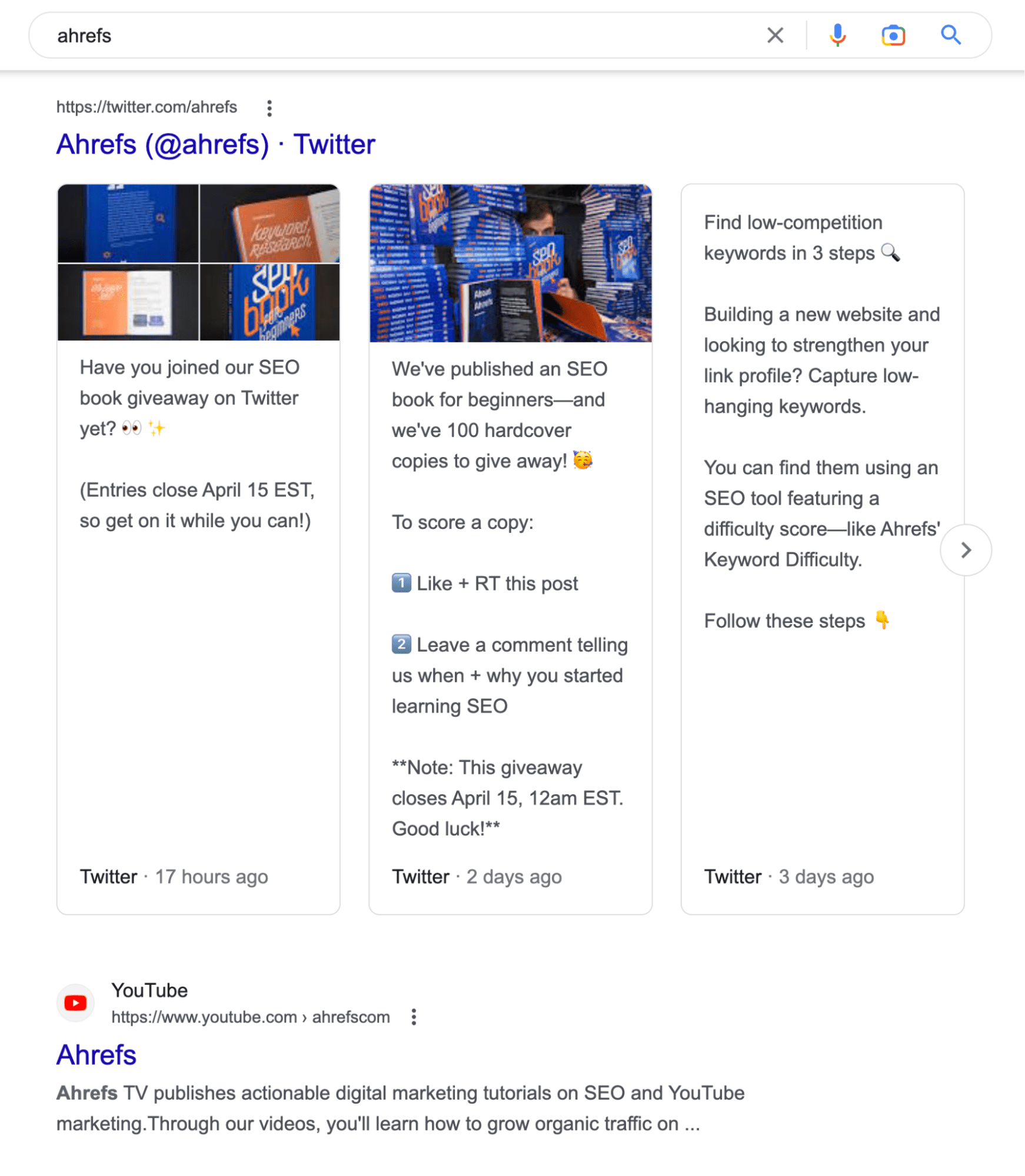
2. Add link bait content to your content plan
Link bait is any content that’s primarily designed to attract backlinks. And guess what? Such content is also the best for generating buzz on social media and elsewhere.
That’s because if someone finds something so interesting or valuable to link to, we can also assume they’ll be keen to engage with that on social media.
If we take a look at our most linked-to pages on our blog…
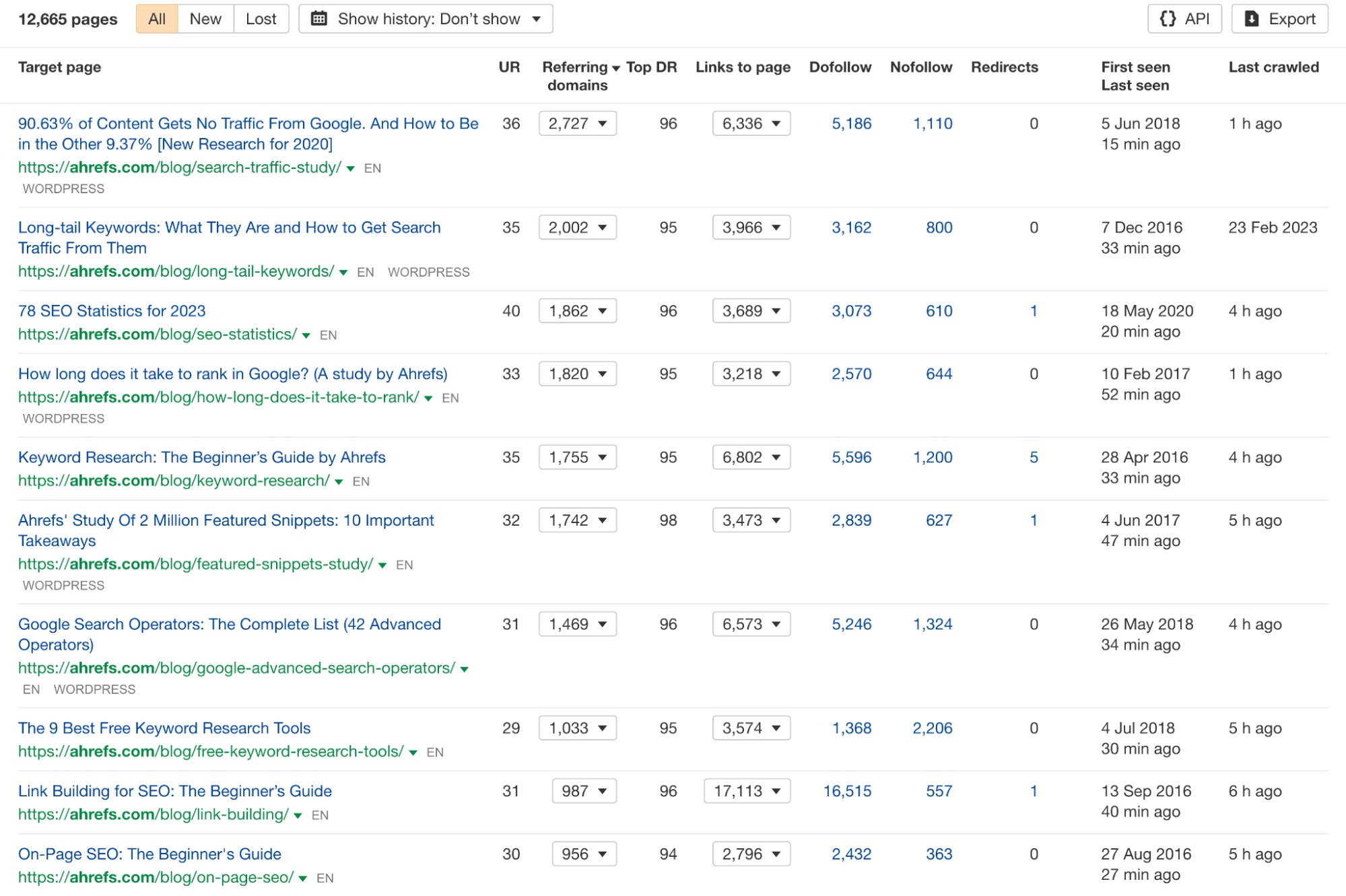
… we’ll find out that 8 out of 10 pages above are also among the most shared ones on social media:

Needless to say that many of these pages also drive significant organic traffic. This is the type of content that’s the most difficult to execute well from start to finish, but it’s worth it on all fronts.
Proper content distribution is key for this content to succeed. You need to go all in, especially for those pieces that don’t target any keyword and are purely made for attracting links and creating buzz. That’s the case of our featured snippets study from both screenshots above.
3. Reach out to people whose content you refer to
Creating great content is often not possible without referring to other authoritative and relevant sources. Adding the right links to your content is yet another E-E-A-T signal.
But linking to other websites has even more benefits. It’s an invitation to open up a conversation and get something from the other party in return—like asking them to help you with content distribution.
Take one of my recent articles about international link building, for example. I wrote it in collaboration with four other SEO experts who were keen to distribute it to their own networks:
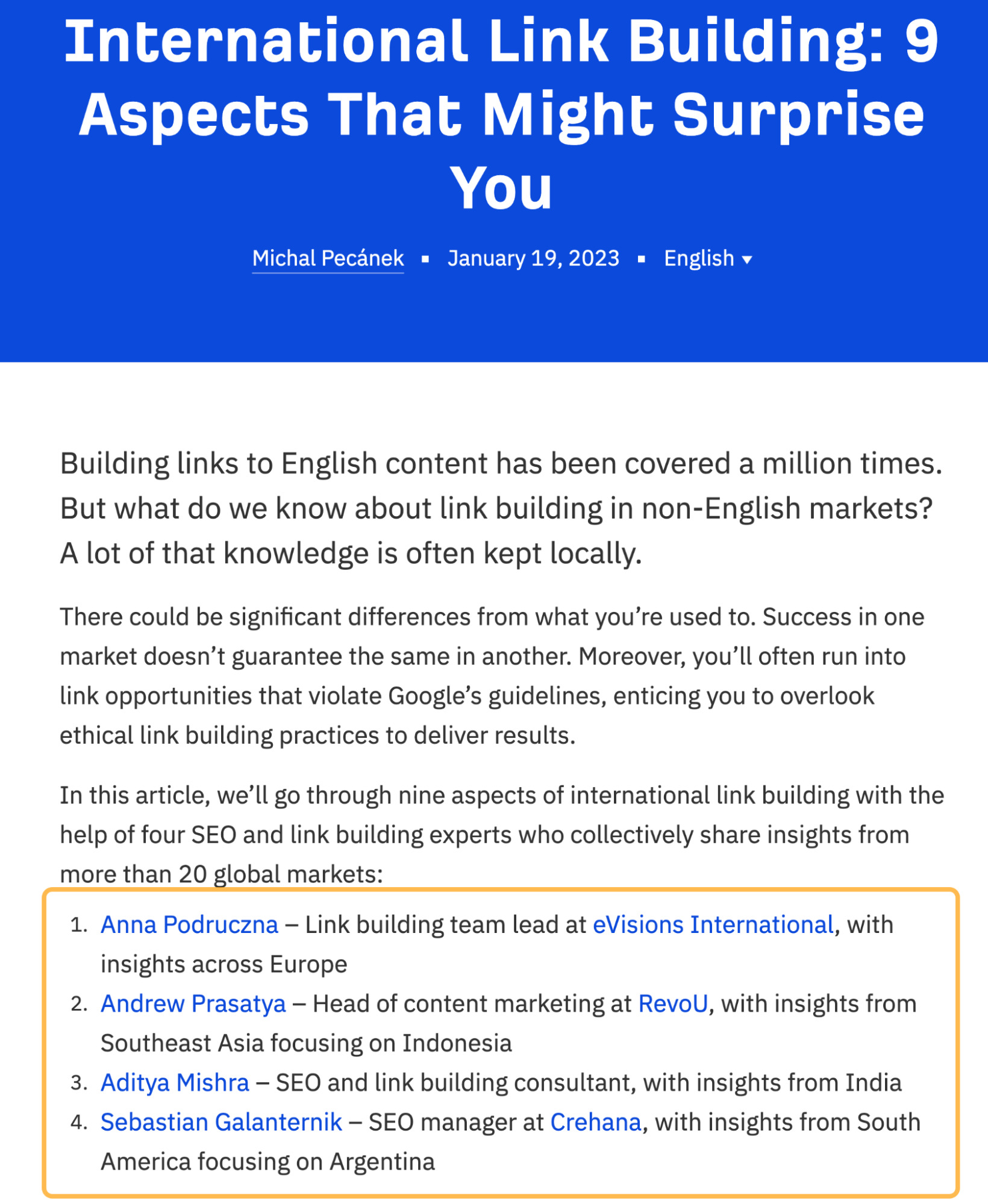
Even though this is something you’re not likely to do for many pieces of content, I used this article for a more evergreen case too. That’s citing resources of others who don’t know about it at the time of writing and publishing:

I reached out to Mark, who authored the survey, and he was keen to share my article on the Authority Hacker feed:
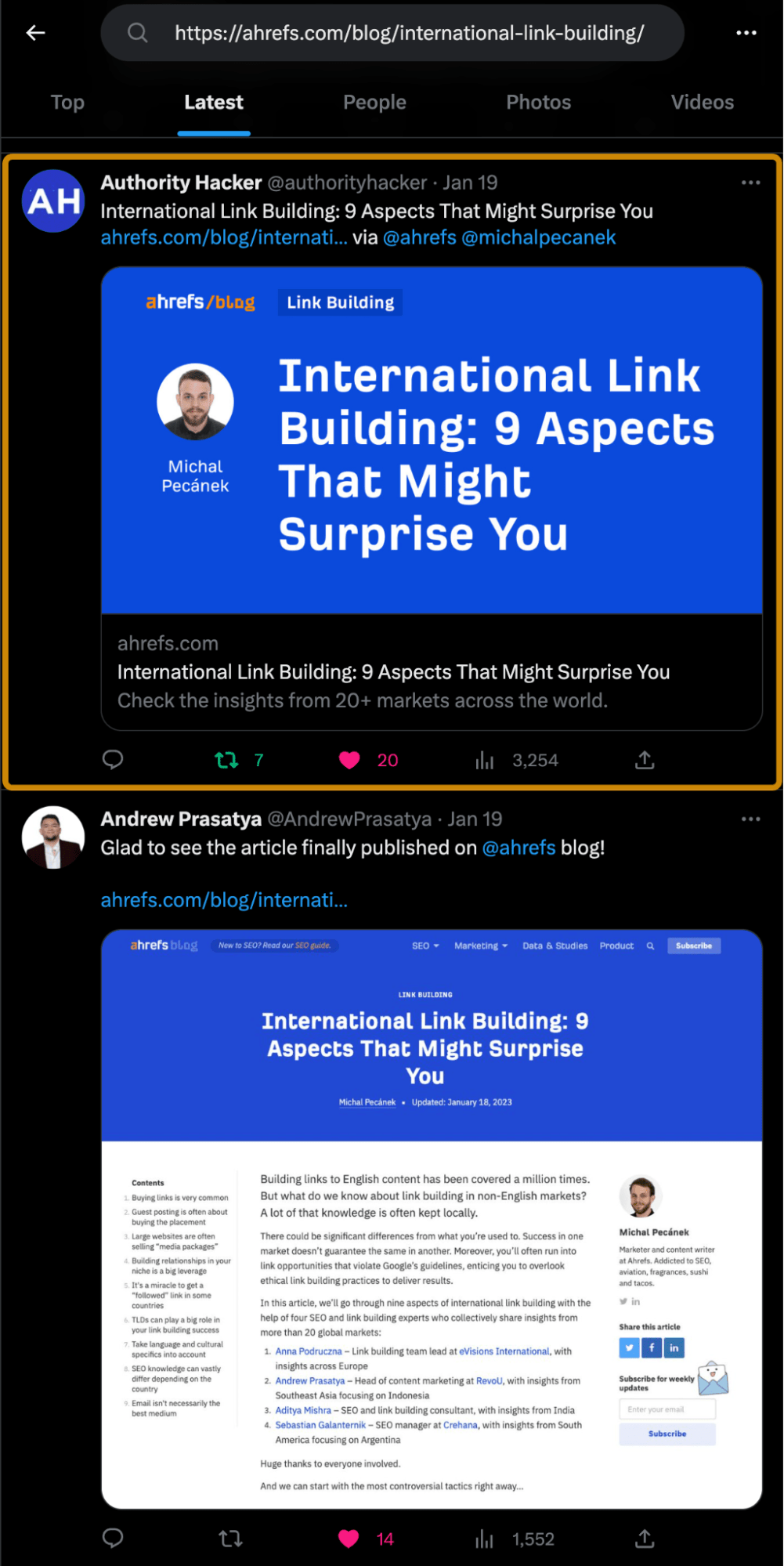
This is for everyone’s benefit. I featured Mark’s survey quite heavily so he can get some valuable referral traffic from the link and also ever-increasing link equity, should my article keep on attracting backlinks.
You can also just tag the social accounts of the referred sources, but that won’t likely convert as well as the direct outreach.
This tactic is also often used for building links, and it’s known as ego baiting.
4. Repurpose your content to other channels and mediums
Every communication medium you use to organically share your content—like your blog, Twitter, LinkedIn, Instagram, or newsletter—requires specific content types and formats.
There are threads on Twitter, image carousels on LinkedIn, linking to your blog in a short video on Instagram, you name it. What works for getting good results on one medium doesn’t necessarily work on another. It may not even be possible to format it that way.
That said, the most important thing here to make everyone’s job easier is to use your existing content for what you use elsewhere. I’ve already shown my thread about bounce rate, which was just excerpts from my article. Our social media manager, Rebecca Liew, does this frequently for our official account too:
This is among the best content formats that work well for us on Twitter. Reb wrote a post diving deep into our Twitter approach if you want to learn more.
But our posts on LinkedIn, which is our second most important social medium after Twitter, naturally look different:
There are certainly still more similarities than differences, so the main two aspects they have in common are that:
- They’re repurposed from our blog and video content.
- They don’t contain links in the main post.
I know, we’ve been talking about social signals mostly related to social media posts that contain links to your content. But native content generally performs better than posts containing a link to your website. It makes sense, as social media platforms earn more money by keeping their users with them for longer.
That said, you’re still growing your brand and E-E-A-T even if you don’t link out. We still add links to our social posts, but it’s not the main type of content we post on social media.
So the tl;dr key to success here is to take advantage of what you already have and use it in different ways across multiple platforms in various formats. Some of it will eventually stick, and you’ll learn a lot along the way.
5. Let the experts handle social media (and nurture good relationships with them)
Last but not least, it’s important to bring up that I’m not a social media specialist and that most other SEOs (or marketers in general) aren’t either.
I’ve done a bunch of successful organic and paid social media campaigns, but my knowledge pales in comparison with social media specialists. I even feel like I’m bad at social media sometimes.
It certainly doesn’t help that many companies are looking for unicorns who are experts on multiple channels. But I have yet to meet someone who’s an expert in three or more marketing channels. They can’t have it all.
My suggestion is that if you don’t already have a social media specialist on your team, you should at least consider hiring a consultant to help you get things going in the right direction.
But if you already have this covered or you’re outsourcing that to an agency, just make sure not to leave them out of the conversation. SEO is a multidisciplinary field, and you need the support of other channels and departments to make the most out of it.
After all, they can use your knowledge and data too.
Final thoughts
All right, I have one extra tip for wrapping things up. It’s something most companies fail at.
Don’t stop with your content distribution whenever you have a new piece of content out. Or in an even worse case, when it’s the next day and you’ve already sent out the one and only obligatory social media post.
It’s completely fine and desirable to send out the same or similar stuff on social media over and over again within a reasonable time frame. The people who see it one time don’t necessarily see it the other and, even if they do, they’re unlikely to remember that.
Got any questions? Ping me on Twitter.
